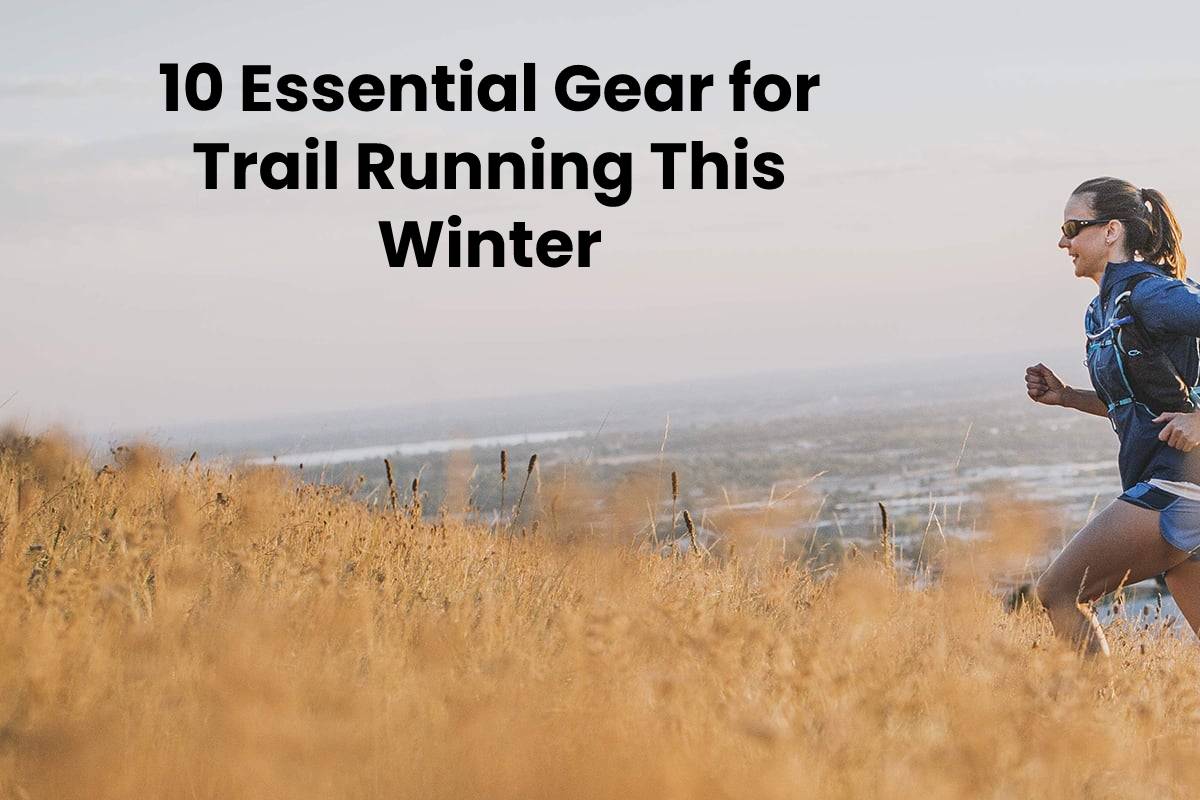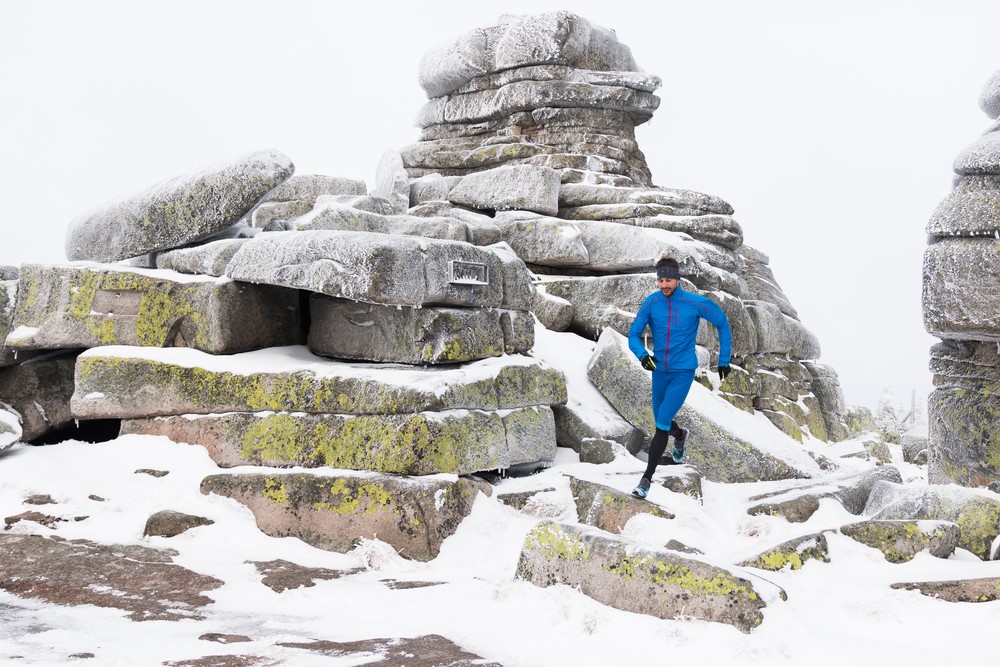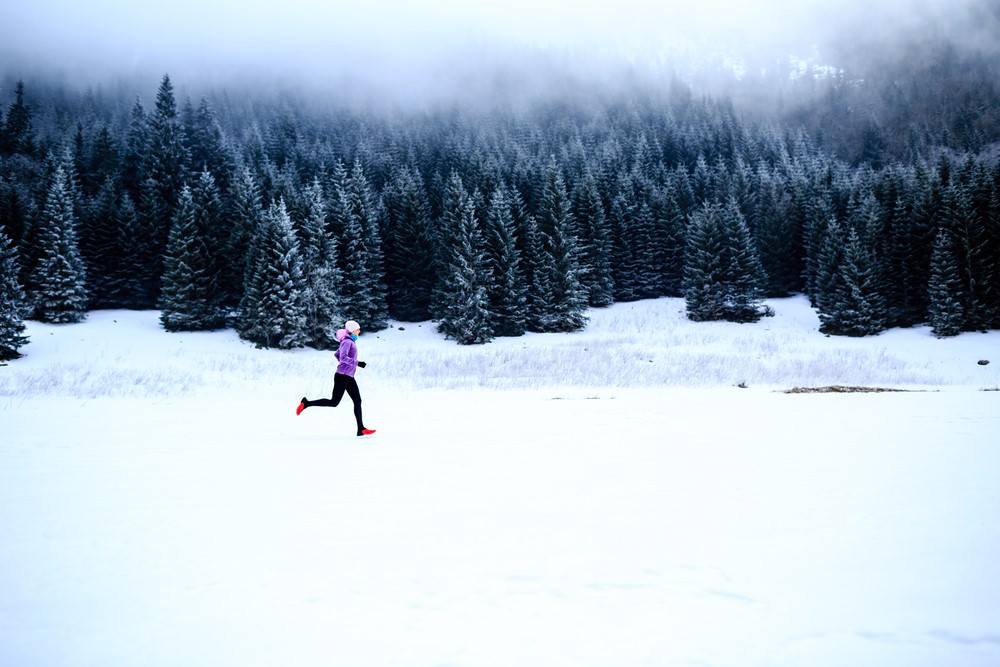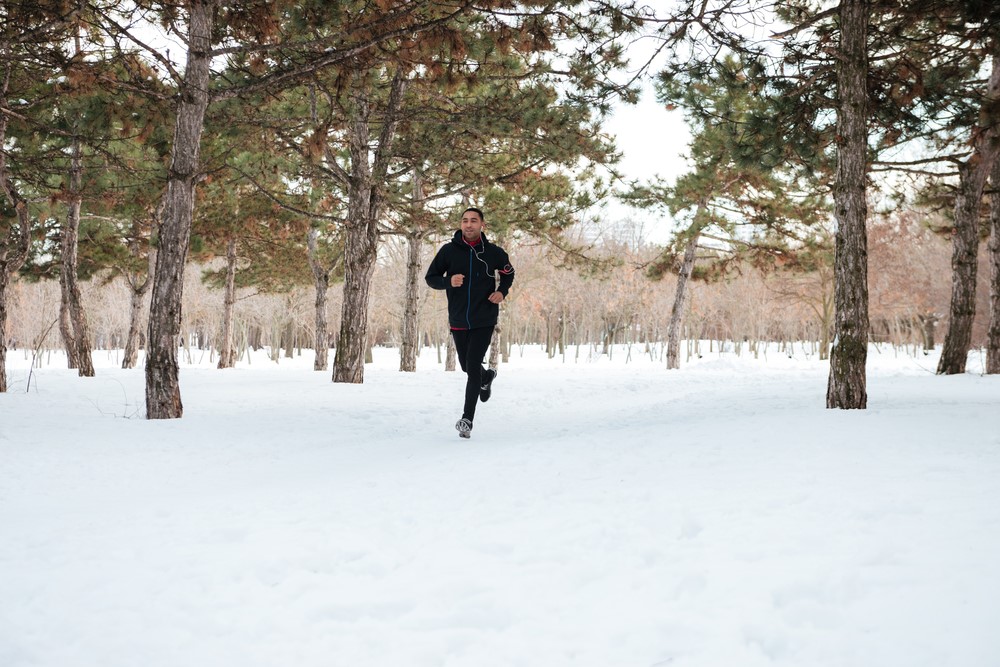
Essential Gear for Trail Running
There’s no feeling quite like trail running, but winter trail running is a whole other beast. We’re not just talking about the physical effort needed. There’s far more to enjoy when it comes to winter running, from empty trails to absolute quiet to the sun reflecting off fresh snow to hearing your feet crunch with every step.
But from all there is to enjoy, how do you stay safe while trail running this winter? From wearing a running bracelet to getting the right shoes, here’s how you can stay safe in the cold and snow
Table of Contents
1. Wear the right shoes
First and foremost, you need winterized running shoes to tackle winter trails. But what makes for the perfect winter running shoe?
Common features to look for include:
GORE-TEX proofing to waterproof shoes
Higher ankle cuffs for added ankle stability
Outsole rock plates to protect against unseen rocks beneath soft snow
Tougher outsoles for increased traction
Shoes that are waterproof yet still breathable
As it is with all other shoes, no two running shoes are the same. The running shoe for you will depend on what trails you’re running, the conditions in your area and the shape of your foot.

2. Protect your head and hands
Don’t forget that you need to protect your extremities, too. While the long-standing belief that we lose the majority of our body heat through our head has been debunked, it doesn’t neglect the fact that a cold head will cause some problems. As most people know, a cold head will make for serious discomfort.
Similarly, you need to protect your hands, too, as a loss of hand warmth could lead to the onset of issues like hypothermia. This is why it’s imperative that you wear a proper hat and gloves while out running on the trails. Most any beanie will do the trick, but you’ll want to keep an eye out on the gloves you buy. Winter gloves tend to be weather-rated, and you’ll want to find gloves that best suit the temperature you’re running in.
3. Waterproof jackets keep you dry
While a wind jacket may suffice for a cool, dry winter day, you’re going to need something tougher to stand up to colder elements. Don’t take your chances while trail running this winter. Instead, wear a waterproof jacket.
Waterproof jackets will protect you against the winter weather because they will repel all precipitation. That’s a benefit compared to water-resistant jackets, which will only repel a certain amount of precipitation and cut a small amount of the wind. Instead, a waterproof jacket will protect you against cold winds and keep snow off your skin and layered shirts.
4. Cut the breeze
Waterproof jackets are great for your top, but what about waterproof pants? Waterproof pants are great for anyone who will be running on snowed-in trails and in heavy snowfall.
However, you can get by with a pair of wind pants when the weather isn’t as bad. They’ll help protect your legs and sensitive bits by cutting that harsh wind. No longer will you find yourself tightening up during a cold-weather run. Now you can stay warm without having to wear too many layers.
5. Don’t overdress
While it’s important to layer up, it’s also important not to overdress. Some runners make the mistake of overdressing for a run.
You might not know this, but there’s a common rule of thumb that runners follow when it comes to dressing for a winter run: dress as if it’s 10 degrees Fahrenheit warmer than it is.
Why is that? People who make the mistake of overdressing often do it for one reason: they dress for the outside temperature alone. While this makes sense, it’s a problem once you start moving. After 10 minutes of running, your body will be properly warmed up, meaning that your body temperature will rise as you get your blood pumping and start sweating.
Suddenly, what felt like a comfortable amount of clothes will feel like too much. Instead, you should feel a little chilly when you first step outside. You’ll feel warm once you start running.

6. Wear a medical alert bracelet
Injuries happen while out on the running trail. They’re especially dangerous when it comes to bad weather conditions, as the cold weather will seriously get to you.
Rather than taking your chances, you should be sure to wear an ID bracelet. In the event of an injury, you’ll stay safe, ensuring you have your relevant personal and medical information on you. It’s as simple as wearing an Apple Watch medical alert bracelet, which can be attached right to your Apple Watch. No fuss with all the protection!
7. Add traction
Running trails can be dangerous in the winter, particularly because unseen ice could build up. Suddenly, you’ve got a slip and fall waiting for you, and you’ll be begging you had avoided it in the first place.
To avoid slips and falls, you’ll need more grip. Grip can be added by wearing a pair of spikes over your trail running shoes. While most trail running shoes provide a sufficient amount of traction, you’ll sometimes want a little more – especially on those cold weather days.
8. Trekking poles seriously help
Don’t take any chances while out on the trail. While you can wear a pair of cleats over your shoes to remain safe, it’s more important for you to have some all-body stability. Trekking poles make that easy. They’ll provide you with the right amount of traction and stability while trying to climb and descend hills.

9. Store dry clothes in your pack
Chances are you’ll be wearing a running pack while out on the trail. Be sure to store some dry clothes in your pack.
You never expect to step into a puddle or fall in some wet snow until it happens. Don’t wait for it to happen – it could have serious consequences. Instead, prepare by storing some dry clothes in your pack. Step in a puddle and drench your socks? While your shoes are still going to be a bit wet, you can at least keep your socks dry.
10. Don’t forget your food and water
Lastly, don’t leave your nutrition at home. You’re still going to need food and water, especially depending on how long you plan on being out for. Plan ahead and always carry a little more, as you want to be prepared for any instance where you might get lost on the trail.
Remember that your safety comes first this winter. Don’t put your health at risk just because you want to have an adventurous run. Instead, prepare and protect yourself against winter-weather dangers.



